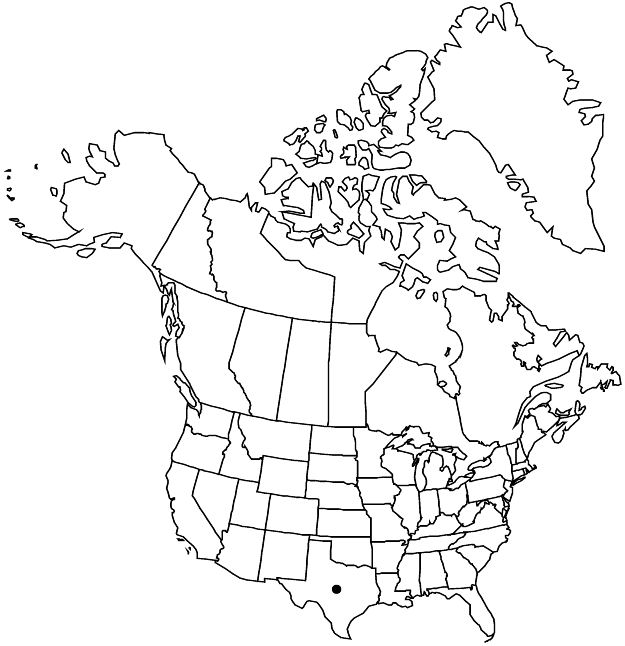Croton heptalon
Syst. Bot. 35: 159. 2010.
Herbs, annual, 5–15 dm, monoecious; stems, leaves, and buds whitish-hairy when young, becoming glabrate. Stems well branched distally, stellate-hairy. Leaves not clustered; stipules linear, 2–7 mm; petiole 0.5–5 cm, glands absent at apex; blade ovatelanceolate, 3–10 × 1–5 cm, base cordate to rounded, margins entire, apex acute, abaxial surface pale green, not appearing brown-dotted, no stellate hairs with brown centers, adaxial surface darker green, both stellate-hairy. Inflorescences bisexual, racemes, 2–4 cm, staminate flowers 3–10, pistillate flowers 4–8. Pedicels: staminate 2–4 mm, pistillate 1–2 mm. Staminate flowers: sepals (4–) 5, 1–2 mm, abaxial surface stellate-hairy; petals 5, linear-oblong-lanceolate, 1–1.5 mm, abaxial surface stellate-hairy; stamens 9–12. Pistillate flowers: sepals 7–8, subequal, 3–6 mm, margins entire, apex straight to slightly incurved, abaxial surface whitish appressed-tomentose; petals 0; ovary 3-locular; styles 3, 3–4 mm, 4-fid, terminal segments 12. Capsules 6–8 × 6–7 mm, smooth; columella tipped with 3-pronged grappling hooklike appendage. Seeds 4–5 × 2–2.5 mm, shiny.
Phenology: Flowering May–Dec.
Habitat: Beaches, coastal dunes, roadsides.
Elevation: 0–50 m.
Discussion
Morphological differences among Croton heptalon and its multifid-styled relatives in sect. Heptallon, especially C. capitatus and C. lindheimeri, can be quite subtle. In general, C. heptalon can be distinguished from C. capitatus by its more elongate pistillate part of the inflorescence, non-recurving sepal tips in the pistillate flowers, and more cordate leaf bases on larger basal leaves. Whitish pubescence on its young growth and styles that branch once into four terminal segments distinguish C. heptalon from C. lindheimeri.
Croton muelleri J. M. Coulter, which is an illegitimate name, pertains here.
Selected References
None.
Lower Taxa
"connate" is not a number. "distinct" is not a number.
